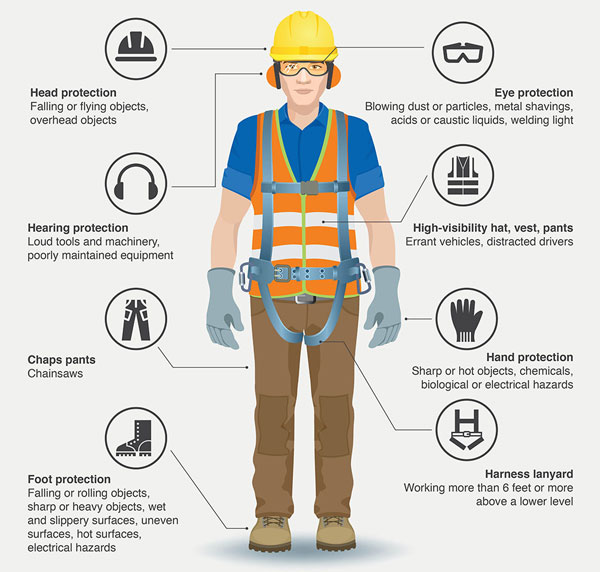Personal Protective Equipment (PPE) refers to specialized equipment or clothing worn by individuals to protect themselves from potential health and safety hazards in the workplace or other environments. PPE is designed to minimize exposure to various risks and can include a range of items depending on the specific hazards present. Here are some common examples of PPE:
- Protective Clothing: This includes items such as coveralls, safety vests, aprons, and high-visibility clothing. Protective clothing is worn to shield the body from physical hazards, chemical splashes, or biological contaminants.
- Head Protection: Helmets, hard hats, and bump caps are worn to protect the head from falling objects, impacts, electrical hazards, or other potential risks.
- Eye and Face Protection: Safety glasses, goggles, face shields, or welding helmets are used to protect the eyes and face from flying debris, chemicals, dust, or intense light sources.
- Respiratory Protection: Respirators or masks are worn to filter or purify the air and prevent the inhalation of harmful substances, such as dust, fumes, gases, or infectious particles.
- Hand Protection: Gloves are used to protect the hands from cuts, abrasions, chemicals, biological hazards, or extreme temperatures. Different types of gloves are available depending on the specific risks involved, such as cut-resistant gloves, chemical-resistant gloves, or heat-resistant gloves.
- Foot Protection: Safety boots, shoes, or toe-capped footwear are worn to protect the feet from falling objects, punctures, slips, or electrical hazards. They may also provide insulation against extreme temperatures or exposure to chemicals.
- Hearing Protection: Earplugs or earmuffs are used to reduce exposure to excessive noise levels that can potentially damage hearing.
- Fall Protection: Harnesses, lanyards, and other fall arrest systems are used to protect against falls from heights by preventing or minimizing the impact of a fall.
It’s important to note that the selection and use of appropriate PPE should be based on a thorough risk assessment and compliance with relevant safety regulations and guidelines. Proper training, maintenance, and regular inspection of PPE are also essential to ensure their effectiveness and reliability in providing protection to individuals in hazardous environments.
IMAGE GALLERY

CONTACT US
For details, do any of the following:
- Call or text me at 09460480491
- Message us on Facebook at https://www.facebook.com/rbsublimationsignage/



